Abstract
Spores of Anemia mexicana Klotzsch and Anemia phyllitidis (L.) Swartz were tested comparatively to investigate the effects of various treatments on spore germination and early gametophyte development in light and darkness. The optimum pH for induction of spore germination is approximately 6. Both species have a minimum 8 hour light insensitive preinduction phase for spore germination. An additional 8 to 12 hours of light are needed to induce 50% germination in A. phyllitidis while at least 24 hours of light are needed for A. mexicana spores. A. phyllitidis has greater sensitivity to the four gibberellic acids tested (GA3, GA4, GA7, and GA13) than A. mexicana for induction of spore germination in darkness. In both species the greatest response was observed with GA4 and GA7. GA13 was clearly the least effective. Gametophytes of each species are 100 times more sensitive to their own antheridiogen than to the antheridiogen of the other species. AMO-1618 (1 millimolar), fenarimol (1 mm), and ancymidol (0.1 mm) had essentially no effect on light-induced germination. The latter two did, however, inhibit gametophyte development.
Full text
PDF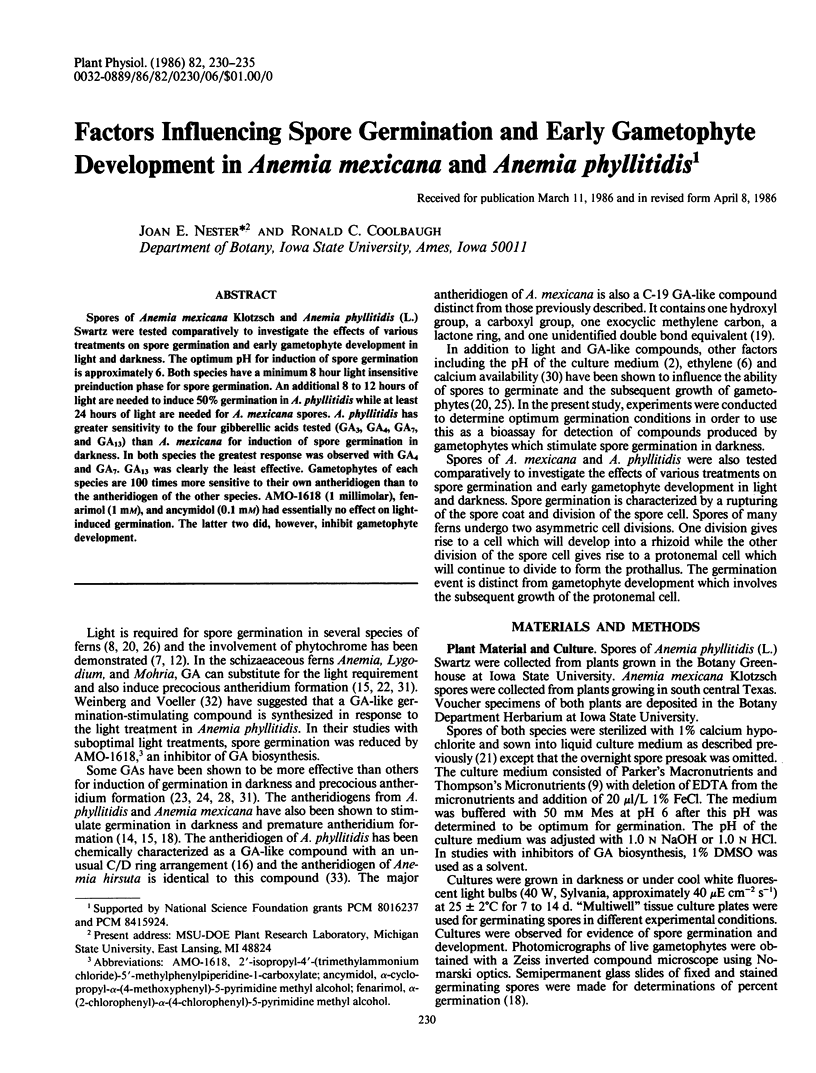
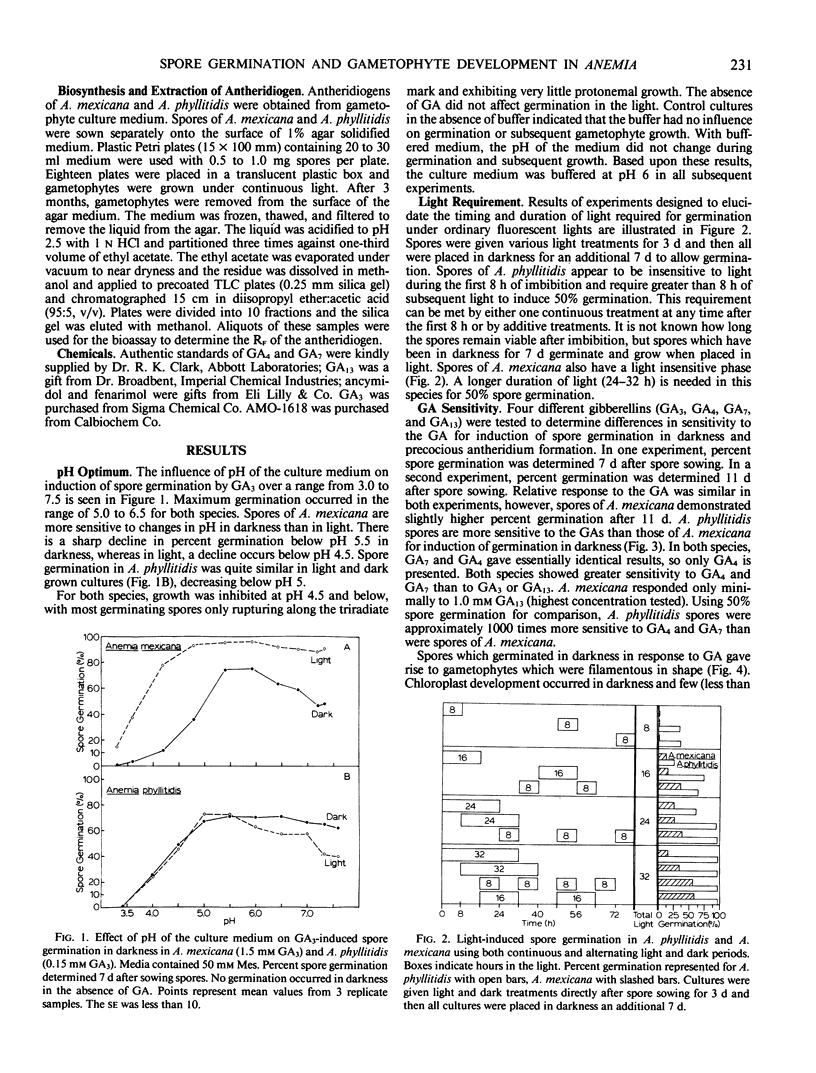
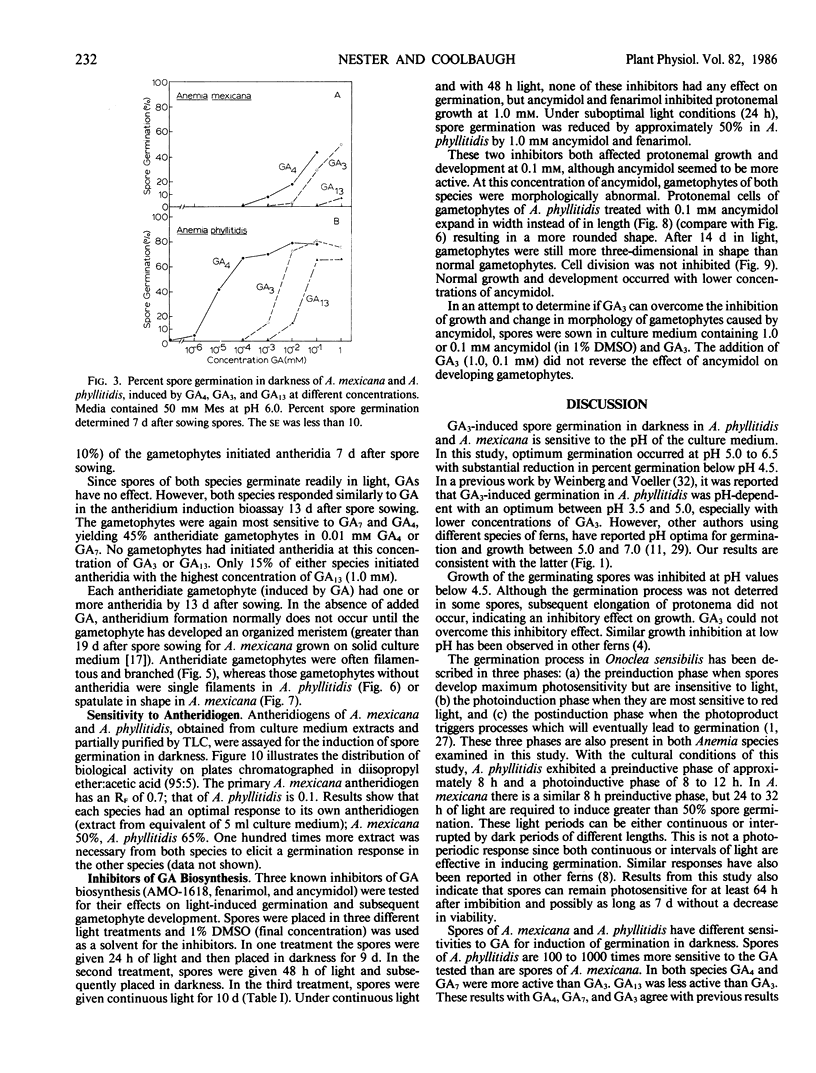
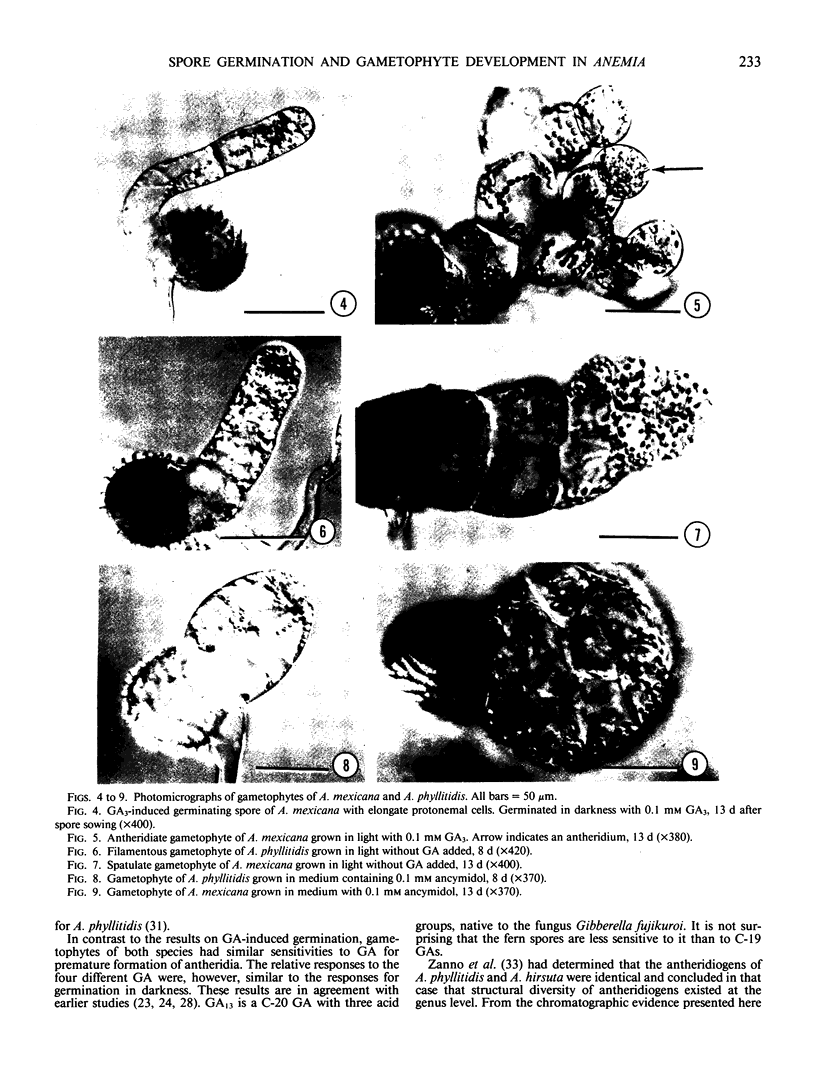
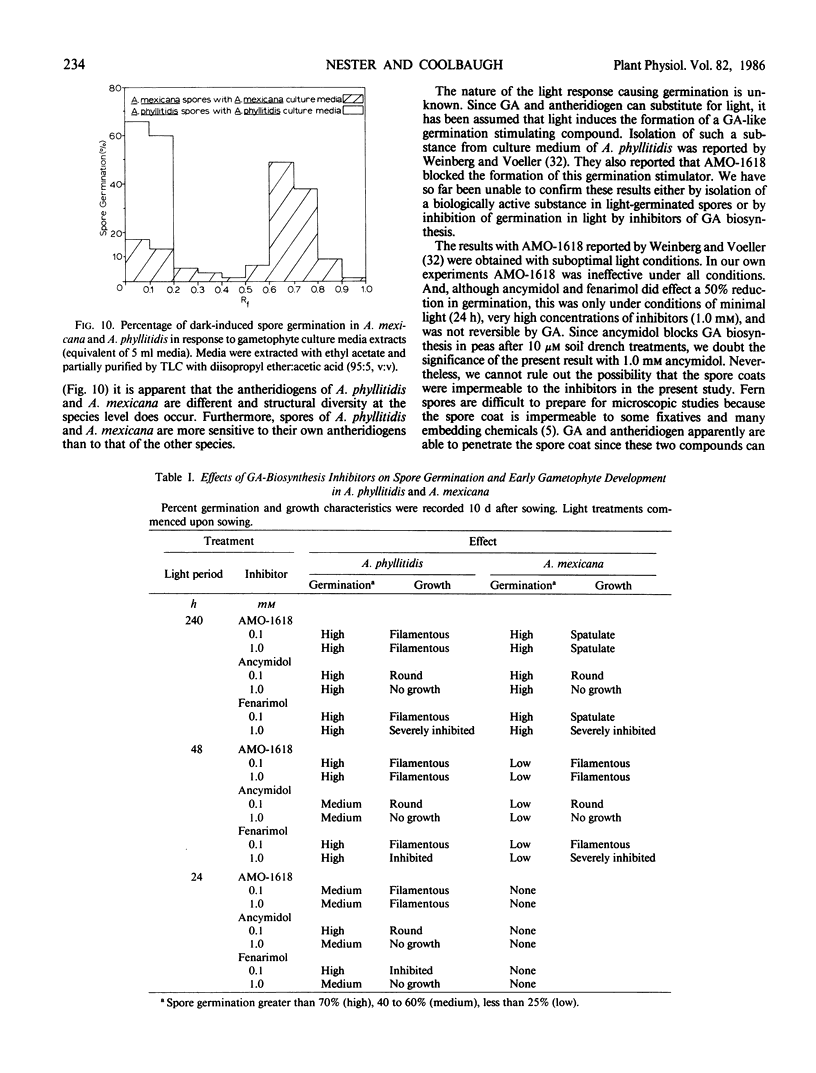
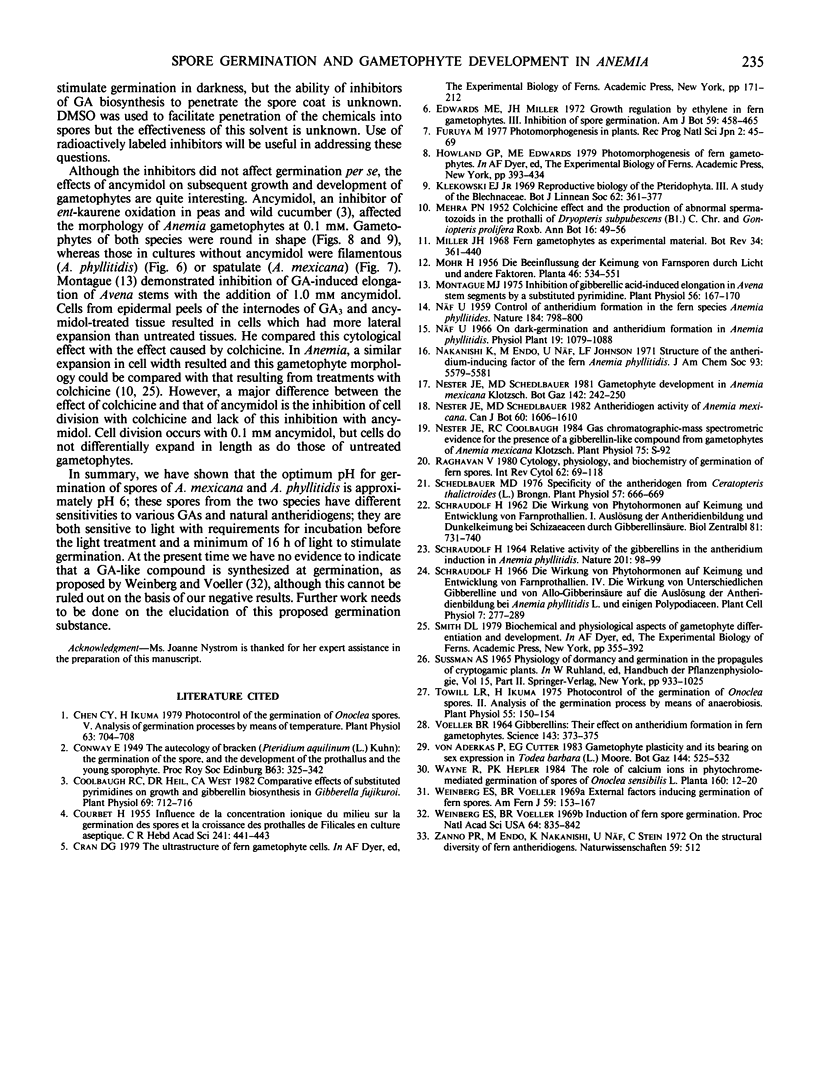
Images in this article
Selected References
These references are in PubMed. This may not be the complete list of references from this article.
- Chen C. Y., Ikuma H. Photocontrol of the germination of onoclea spores: v. Analysis of germination processes by means of temperature. Plant Physiol. 1979 Apr;63(4):704–708. doi: 10.1104/pp.63.4.704. [DOI] [PMC free article] [PubMed] [Google Scholar]
- Coolbaugh R. C., Hell D. R., West C. A. Comparative Effects of Substituted Pyrimidines on Growth and Gibberellin Biosynthesis in Gibberella fujikuroi. Plant Physiol. 1982 Mar;69(3):712–716. doi: 10.1104/pp.69.3.712. [DOI] [PMC free article] [PubMed] [Google Scholar]
- Montague M. J. Inhibition of Gibberellic Acid-induced Elongation in Avena Stem Segments by a Substituted Pyrimidine. Plant Physiol. 1975 Aug;56(2):167–170. doi: 10.1104/pp.56.2.167. [DOI] [PMC free article] [PubMed] [Google Scholar]
- Schedlbauer M. D. Specificity of the Antheridogen from Ceratopteris thalictroides (L.) Brongn. Plant Physiol. 1976 Apr;57(4):666–669. doi: 10.1104/pp.57.4.666. [DOI] [PMC free article] [PubMed] [Google Scholar]
- Towill L. R., Ikuma H. Photocontrol of the Germination of Onoclea Spores: II. Analysis of Germination Processes by Means of Anaerobiosis. Plant Physiol. 1975 Feb;55(2):150–154. doi: 10.1104/pp.55.2.150. [DOI] [PMC free article] [PubMed] [Google Scholar]
- Voeller B. R. Gibberellins: Their Effect on Antheridium Formation in Fern Gametophytes. Science. 1964 Jan 24;143(3604):373–375. doi: 10.1126/science.143.3604.373. [DOI] [PubMed] [Google Scholar]
- Weinberg E. S., Voeller B. R. Induction of fern spore germination. Proc Natl Acad Sci U S A. 1969 Nov;64(3):835–842. doi: 10.1073/pnas.64.3.835. [DOI] [PMC free article] [PubMed] [Google Scholar]
- Zanno P. R., Endo M., Nakanishi K., Näf U., Stein C. On the structural diversity of fern antheridiogens. Naturwissenschaften. 1972 Nov;59(11):512–512. doi: 10.1007/BF00609821. [DOI] [PubMed] [Google Scholar]








